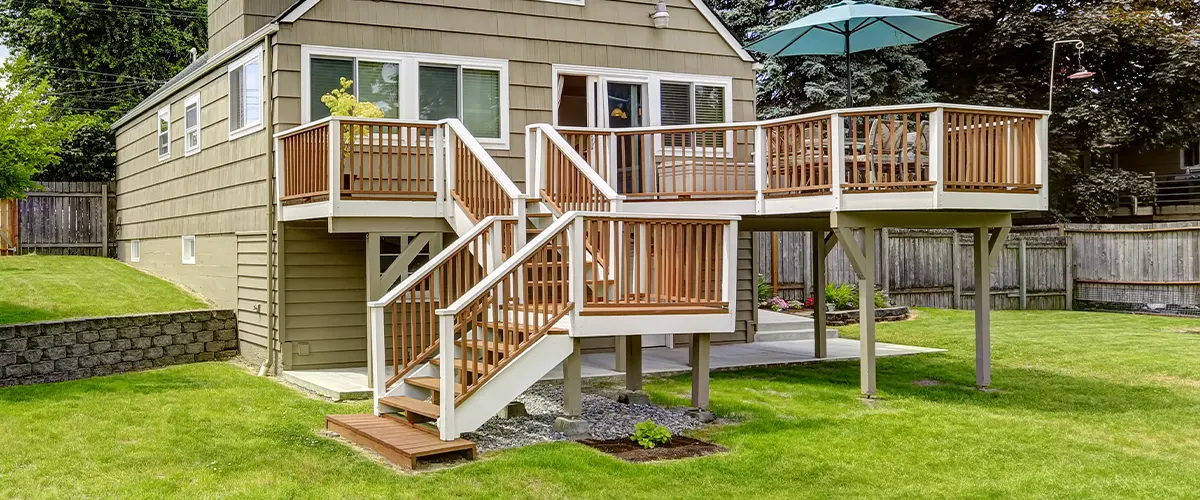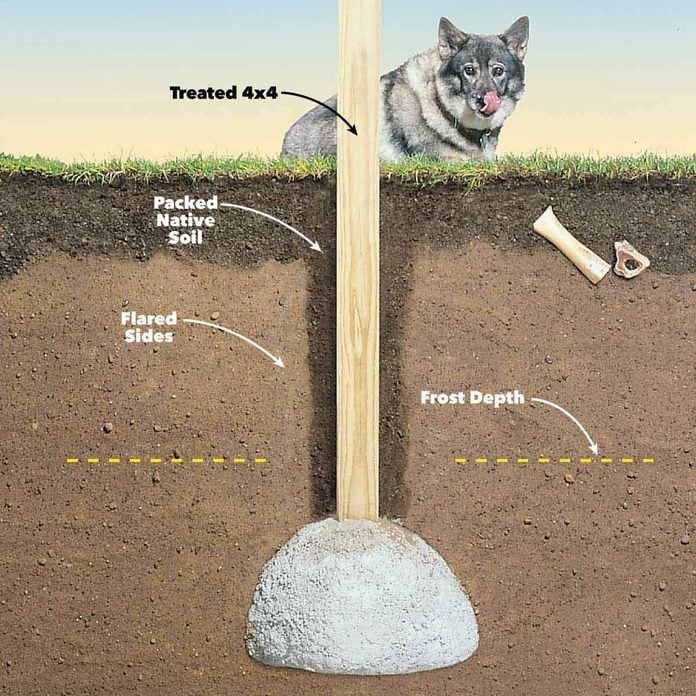Ensure Security and Longevity With Correctly Set Up Deck Footings
Deck footings may not be the most glamorous facet of deck building and construction, yet they play a vital function in ensuring security and longevity. In this discussion, we will explore the importance of proper deck footings, factors to think about throughout installation, various types of footings readily available, detailed installation overview, and upkeep tips for guaranteeing resilient footings.

Relevance of Proper Deck Footings
Why are effectively set up deck grounds critical for the stability and long life of your deck? The answer exists in the fundamental duty that deck grounds play in supporting the weight of the entire framework. Deck grounds are the structure on which the deck relaxes, moving the tons from the deck to the ground. It can lead to a range of problems that compromise the stability and longevity of the deck. when grounds are not effectively installed.
First of all, effectively set up deck grounds distribute the weight of the deck equally, stopping any kind of uneven settling or sinking. This is specifically essential in locations with unpredictable dirt, as it helps to minimize the threat of the deck collapsing or changing. Additionally, well-installed grounds ensure that the deck continues to be level, stopping any kind of structural damage that can take place when a deck ends up being unequal.
Second of all, appropriately set up grounds provide a solid anchor for the deck, avoiding too much activity and persuade. This helps to maintain the structural honesty of the deck, lowering the risk of injuries or accidents. It likewise lessens the wear and tear on the deck, enabling it to stand up to the components and routine use for a longer time period.
Variables to Consider for Deck Footing Installment
When setting up deck footings, there are numerous vital factors to think about for correct setup. Different dirt types have different load-bearing capacities, so it is essential to perform a soil examination to make certain the footings can support the weight of the deck and its passengers. By taking right into account these elements, you can make sure the proper installation of deck footings and appreciate a durable and steady deck.
Sorts Of Deck Footings to Select From
There are several different kinds of deck footings readily available for you to choose from. Each type has its very own benefits and downsides, so it's vital to consider your particular requirements and the problems of your deck prior to choosing.
One usual type of deck ground is the concrete ground. This entails digging openings in the ground and putting concrete into them to produce a strong structure. Concrete footings are durable and offer exceptional security, making them appropriate for decks in locations with tough dirt problems or high wind tons.
One more alternative is the helical pier footing, which is composed of a steel shaft with helical plates that are screwed into the ground. These footings are quick to mount and can be made use of in various soil types, including sandy or clay soils. They are likewise adjustable, allowing for very easy progressing of the deck.
Sonotube grounds are another preferred choice. These footings are produced by putting a cardboard tube in an find here opening and loading it with concrete. Sonotube grounds are relatively easy to set up and provide sufficient security for smaller sized decks or in locations with less requiring dirt problems.

When choosing the kind of deck footing, it's important to take into consideration elements such as dirt problems, deck dimension and weight, regional building regulations, and individual choices. By selecting the appropriate ground type, you can make sure the stability and durability of your deck.
Step-by-Step Overview for Setting Up Deck Footings

Figure out the place: Start by marking the specific placement of each footing making use of stakes and string (Deck Footings). Take right into account any kind of local structure codes or guidelines relating to obstacle distances
Dig the openings: Utilize a message hole miner or an auger to dig the holes for the footings. Usually, a depth of at the very least 36 inches is recommended for security.
Level the openings: Make his explanation certain that the bottoms of the holes are degree (Deck Footings). This can be accomplished by utilizing a degree or a straight board across the top of the openings
Include crushed rock: Area a layer of gravel at the base of each hole to improve water drainage and stop the ground from sinking into the soil gradually.
Put the ground types: Insert the ground forms right into the openings, ensuring they are focused and level. Usage risks to secure them in area.
Mix and put concrete: Comply with the guidelines on the concrete mix bag to prepare the concrete. Put the concrete right into the ground types, filling them completely.
Smooth the surface area: Make use of a trowel to smooth the surface area of the concrete and remove any air pockets. Permit the concrete to heal according to the producer's guidelines.
Maintenance Tips for Resilient Deck Footings
Appropriate maintenance is vital for making certain the durability and security of deck footings. By on a regular basis evaluating and preserving your deck grounds, you can prevent damage and potential security dangers.
Regular cleaning is also necessary for keeping deck footings. Particles, dust, and plant life can collect around the grounds, which can lead to moisture buildup and decay. Cleansing the footings regularly, making use of a brush or a pressure washing machine, can help protect against these issues and prolong the lifespan of your deck.
In enhancement to cleaning, it is important to maintain the location around the grounds free from any kind of obstructions. Prevent piling things versus the grounds or enabling plants to grow also close to them. These obstructions can trap moisture and create the footings to degrade over time.
Finally, normal resealing of the footings is recommended to protect them from wetness and other ecological variables. Using a water resistant sealer can help protect against water damages and expand the life expectancy of the footings.
Conclusion
Finally, proper installation of deck footings is vital for ensuring security and long life of your deck. Aspects such as soil kind, load capacity, over here and local building regulations need to be considered when selecting the ideal type of deck footings. Complying with a step-by-step overview for installment and normal maintenance will certainly aid to guarantee the grounds stay durable and long-lasting.
In this discussion, we will certainly explore the importance of correct deck grounds, aspects to think about during setup, different kinds of footings readily available, detailed installment guide, and upkeep ideas for ensuring resilient footings. Deck grounds are the foundation on which the deck rests, transferring the load from the deck to the ground.One usual type of deck footing is the concrete ground. Put the ground kinds: Place the footing forms into the openings, guaranteeing they are centered and degree.In conclusion, proper installment of deck grounds is essential for making sure security and durability of your deck.